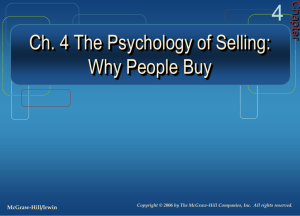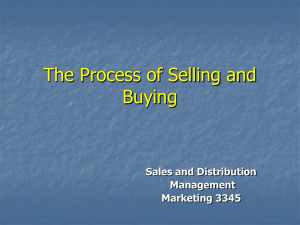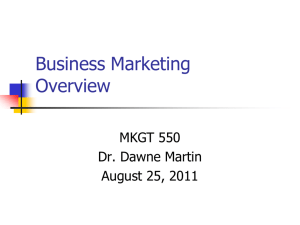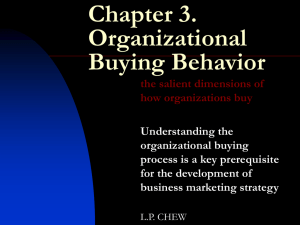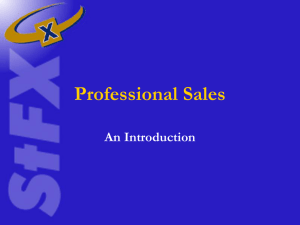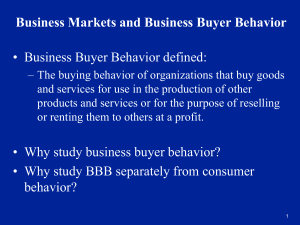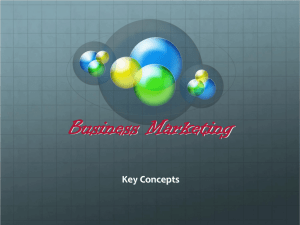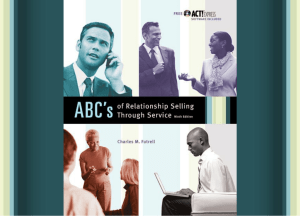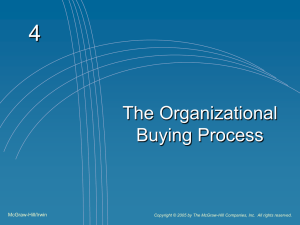Chap002
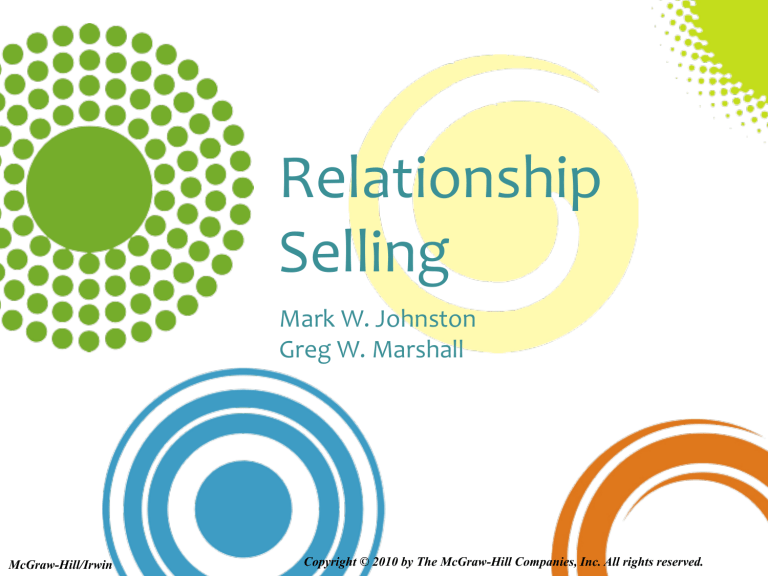
McGraw-Hill/Irwin
Relationship
Selling
Mark W. Johnston
Greg W. Marshall
Copyright © 2010 by The McGraw-Hill Companies, Inc. All rights reserved.
Using Information to Understand
Sellers and Buyers
Chapter 2
2-3
Learning Objectives
•
Explain the historical basis for stereotyped views of selling in society
•
Point out a variety of reasons why sales jobs can be highly satisfying
•
Identify and explain key success factors for salesperson performance
•
Discuss and give examples of different types of selling jobs
•
List and explain the roles of various participants in an organizational buying center
2-4
Learning Objectives
•
Describe the relationship between buying centers and selling centers and the nature of team selling
•
Outline the stages in organizational buyer decision making
•
Distinguish among different organizational buying situations
•
Understand the concept of CRM and how it serves to help salespeople manage information
2-5
Media Sources of Negative Image of Selling
•
“Death of a Salesman”
•
“WKRP in Cincinnati”
•
“Glengarry Glen Ross”
•
“Boiler Room”
2-6
Leadership 2.1
Six Key Business Trends
•
Past success can hold you back
•
Tech-driven change will accelerate
•
Time is increasing in value
•
Shifting from “information” to
“communication” age
•
Solutions become obsolete faster
•
Value you bring today is forgotten faster
2-7
Attractive Aspects of Selling Careers
•
Autonomy
•
Multifaceted and challenging activities
•
Financial rewards
•
Favorable working conditions
•
Career development and advancement opportunities
2-8
Innovation 2.2
Create Your Own Creativity
•
Creativity
•
Can be developed
•
Increases productivity
•
Keeps open opportunities for improvement
•
Encourages problem-solving from unusual sources
2-9
Leadership 2.3
Making Remote Leadership Work
•
Spend time early, in person, with new boss
•
Choose the right mode of communication
•
Find opportunities to check in
•
Assume responsibility for the relationship
2-10
Exhibit 2.2
From Salesperson to CEO
2-11
Key Success Factors in
Relationship Selling
•
Listening skills
•
Follow-up skills
•
Ability to adapt sales style from situation to situation
•
Tenacity — sticking with a task
•
Well-organized
2-12
Key Success Factors in
Relationship Selling
•
Verbal communication skills
•
Proficiency in interacting with people at all levels of a customer’s organization
•
Demonstrated ability to overcome objections
•
Closing skills
•
Personal planning and time management skills
2-13
Exhibit 2.6
How Salespeople Spend Their Time
2-14
Types of B2B Sales
•
Sales to resellers, e.g. retail stores
•
Sales to business users, e.g. General
Electric selling parts to Boeing for use in building airplanes
•
Sales to institutions, e.g., Dell selling computers to a governmental agency
2-15
Types of B2B Sales Jobs
•
Trade servicer
•
Missionary seller
•
Technical seller
•
New-business seller
2-16
Participants in the Organizational
Buying Process
•
Initiators
•
Users
•
Influencers
•
Gatekeepers
•
The buyer
•
The decider
•
The controller
2-17
Team Selling
•
Structure or system within the selling organization which works to present a unified, well-coordinated effort to the customer
•
Customer relationship teams often headed up by the account manager
•
Matrix organizations allow account executives to pull from the full range of functional resources within a company
2-18
Exhibit 2.7
Organizational Buying Decision Stages
2-19
Exhibit 2.8
Consumer vs Organizational Buyer Behavior
2-20
Types of Organizational Buying Situations
•
New-task purchase
•
Modified rebuy
•
Straight rebuy
2-21
Exhibit 2.9
Process Cycle for CRM
2-22
Role Play http://www.mhhe.com/business/marketing/videos/RS/02_RP_using_info_sellers_buyers.mp4
2-23
2-24
